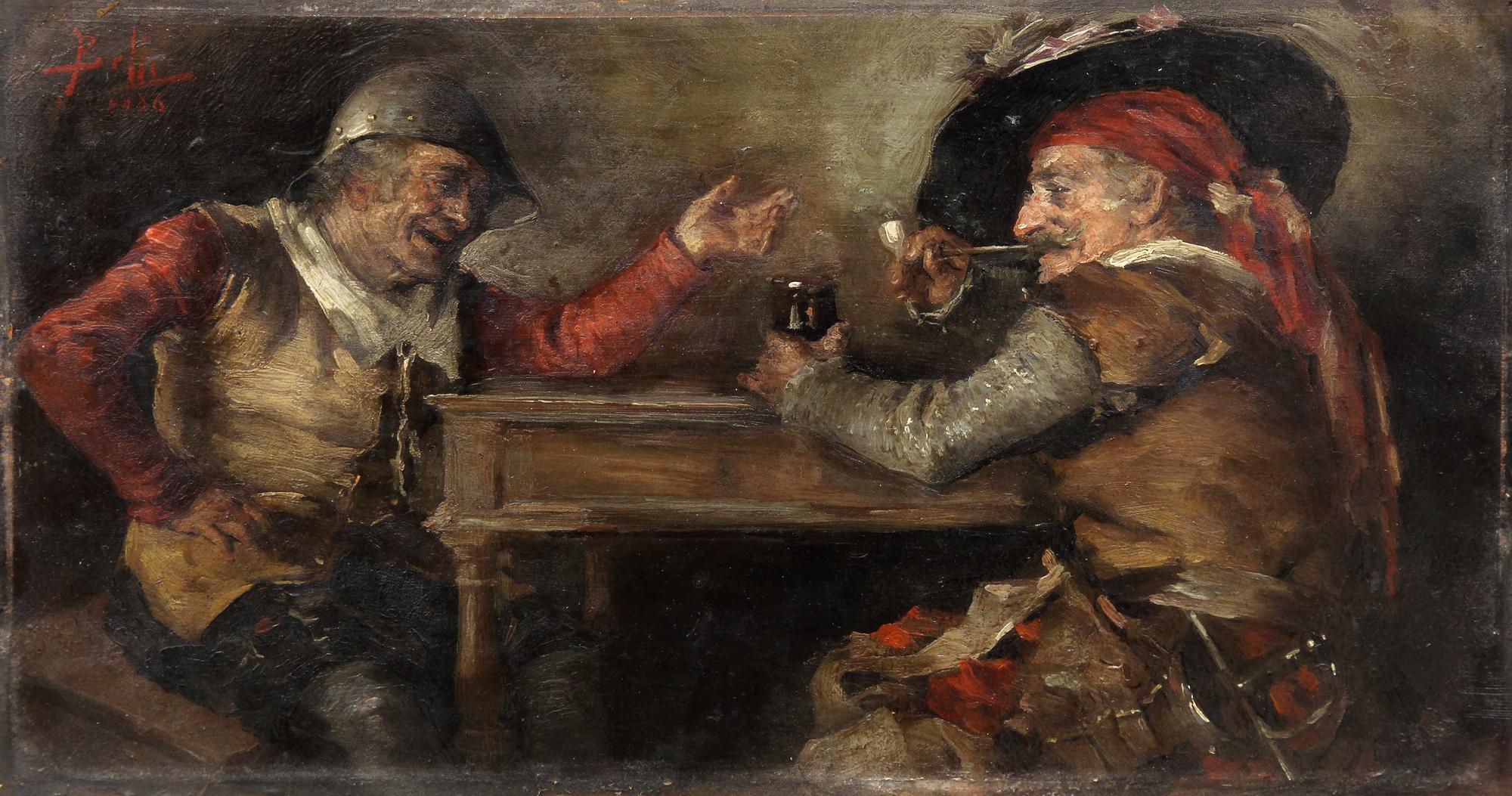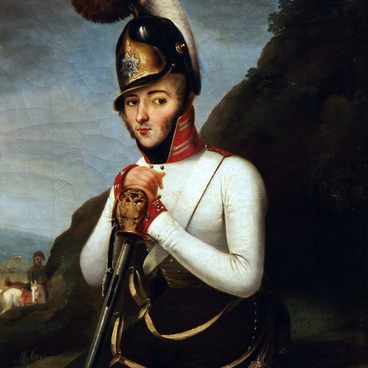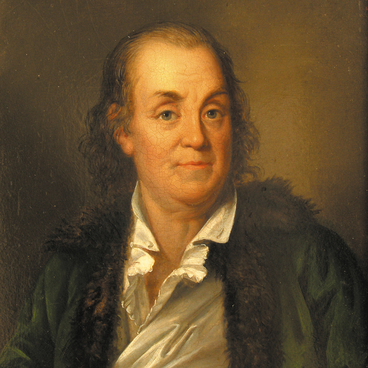Benito Belli painted In the tavern in 1886. The picture shows two patrons sitting at the table in a tavern, engaged in a lively conversation. The painting is executed with loose, easily visible brush strokes. The author successfully conveys the genial atmosphere of the tavern, where people can enjoy the company of others.
The artist disregards details of the interior and focuses instead on the characters, two representative Spanish types. Belli often had as models common Spanish folk –gypsies, buskers, majas, caballeros, matadors or corsairs. Art critics are undecided about the occupation of the men in the picture; their costumes are not specific for any station, although they might be two conquistadors. The word conquistador is derived from conquista (conquest), the Spanish way of referring to colonization of the Americas. In the 15th and 16th centuries many Spaniards launched into conquering the New World. Some of them were impoverished noblemen who sailed for the Americas on their own, without any royal sanction or government support.
Nineteenth-century Spain experienced an upsurge of interest for the national artistic heritage. Medieval architectural monuments were restored, and artists’ sitters would pose for pictures in historical costumes. Benito Belli’s specialization was painting types, characteristic folk characters, rather than individuals. They were arranged into costume genre scenes, both interior and exterior, and tavern scenes were very common.
The artist disregards details of the interior and focuses instead on the characters, two representative Spanish types. Belli often had as models common Spanish folk –gypsies, buskers, majas, caballeros, matadors or corsairs. Art critics are undecided about the occupation of the men in the picture; their costumes are not specific for any station, although they might be two conquistadors. The word conquistador is derived from conquista (conquest), the Spanish way of referring to colonization of the Americas. In the 15th and 16th centuries many Spaniards launched into conquering the New World. Some of them were impoverished noblemen who sailed for the Americas on their own, without any royal sanction or government support.
Nineteenth-century Spain experienced an upsurge of interest for the national artistic heritage. Medieval architectural monuments were restored, and artists’ sitters would pose for pictures in historical costumes. Benito Belli’s specialization was painting types, characteristic folk characters, rather than individuals. They were arranged into costume genre scenes, both interior and exterior, and tavern scenes were very common.





